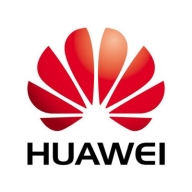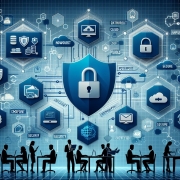


Huawei NGFW and Check Point Harmony SASE are robust network security solutions with distinct strengths. Users favor Huawei NGFW for its competitive pricing and support, while Check Point Harmony SASE excels in feature set and value for money.
Features: Huawei NGFW is praised for its comprehensive threat detection, advanced security capabilities, and competitive pricing. Check Point Harmony SASE receives high marks for its integrated SASE model, ease of managing remote workforces, and features that enhance productivity more effectively.
Room for Improvement: Users suggest that Huawei NGFW could benefit from enhanced cloud integration, better scalability, and modernization. Check Point Harmony SASE, while robust, could improve its reporting functionalities, decrease initial setup complexity, and streamline the user experience.
Ease of Deployment and Customer Service: Huawei NGFW is noted for its straightforward deployment process and responsive customer service. Check Point Harmony SASE deployment can be more complex but offers responsive customer service similar to Huawei. Despite the complexities, Check Point's support structure meets user expectations well.
Pricing and ROI: Huawei NGFW's setup costs are generally lower, offering a favorable ROI for budget-conscious businesses. Check Point Harmony SASE, despite higher initial costs, is viewed as a worthwhile investment due to its extensive features and long-term benefits. This disparity underscores Huawei's affordability and Check Point's value proposition.
Clients are now comfortable and not wasting productive hours on IT support.
The automation part is giving us a cost benefit and speed; we can react faster.
It's a very useful tool to mitigate and protect your enterprise.
Check Point Harmony SASE (formerly Perimeter 81) blocked access to those URLs at the network level before users could click through.
We are saving 40% of our time, which is good.
They offer very accurate solutions.
The quick resolution of issues with Fortinet FortiGate is due to the support of the company and the fact that the equipment is easy to work with.
I would rate the technical support for Fortinet FortiGate a ten out of ten.
I would rate support 10 out of 10.
After updating firmware, data utilization was visible for a few days before collapsing again.
They scale up really well from smaller models like the FortiGate 40 and 50 to bigger sites with the FortiGate 100 for more throughput - up to enterprise datacenters.
The variation comes in terms of the interfaces and throughputs, but from a security perspective, you get the same benefit, irrespective of whether you have an entry-level unit or an enterprise.
We determine sizing based on multiple factors: number of users, available links, traffic types, server count, services in use, and whether services will be published.
The cloud-native model ensures we are not tied to any specific location or hardware, which has been a great game changer in terms of agility.
The scalability of Check Point Harmony SASE (formerly Perimeter 81) is good, and I can add more users and devices easily as my organization grows.
I would rate it nine out of ten for scalability.
We're experiencing 99.999% availability consistently.
I would rate the stability of Fortinet FortiGate a ten out of ten.
Currently, we are experiencing a general outage of one of the main internet service providers of the Dominican Republic, and we have not been impacted in our operations because with SD-WAN, we have another internet service provider and we are working with the second WAN connection without any disruption.
Even the support team does not have a proper solution for this issue.
There are some lags and glitches with connectivity, so I would rate the stability as between seven or eight out of ten.
After the last improvement, I can say it is much more stable now.
Investing in a solution that can accommodate such growth would be more cost-effective than repeatedly purchasing new hardware.
The constant daily revisions necessitate meticulous identification of the relevant documents to prevent the use of outdated information that could jeopardize our environment.
While Fortinet claims to offer a comprehensive network solution, it falls short in addressing computer application issues, particularly server security.
An example of when the support cycle took longer than expected was when I had a ticket open for nearly six to seven months regarding a simple issue.
A local data center in Turkey would enhance the product, as currently, our Internet traffic goes to another country, which is problematic for us.
One area for improvement is integration with third-party identity providers.
FortiGate is priced lower than Palo Alto.
Last year, I renewed the support for three years, which can sometimes be expensive but depends on the security benefits and how it helps us.
It is about 20% cheaper.
Cost efficiency is a consideration, as SASE products are not the cheapest security products.
It is a bit expensive.
My experience with pricing, setup cost, and licensing for Check Point Harmony SASE (formerly Perimeter 81) is that it is a rental service, but I find it satisfactory.
In terms of security, we have not experienced any security flaws or loopholes, and it has proven to be quite stable.
FortiGate has helped reduce the risk of cyberattacks that might disrupt our client's production.
These features help reduce our downtime, manage the ISPs, and deploy SLAs for all the website traffic.
The firewall management is the most valuable feature for me.
The Zero Trust Network Access (ZTNA) feature is a major highlight as it gives users seamless and secure access to internal resources without requiring a full-blown VPN, which improves both security and user experience.
The best key features of Harmony are stabilization, private access, and Internet access.



Fortinet FortiGate offers comprehensive network security and firewall protection across multiple locations. It effectively manages data traffic and secures environments with features like VPN, intrusion prevention, and UTM controls.
Organizations rely on Fortinet FortiGate for its robust integration with advanced security policies, ensuring significant protection for enterprises, cloud environments, and educational sectors. It facilitates network segmentation, application-level security, and authentication management, securing communication within and between locations such as branches and data centers. Its efficient SD-WAN and UTM features enable streamlined data management and enhanced threat protection capabilities. Users appreciate its centralized management, facilitating seamless operations across diverse environments.
What are the key features of Fortinet FortiGate?
What benefits should users expect from Fortinet FortiGate?
Fortinet FortiGate is crucial in sectors like education, offering robust networks for secure data flow between campuses and facilitating remote learning. In enterprise environments, it allows efficient management of application traffic and security across multiple branches, while in the cloud, it seamlessly integrates with diverse platforms to enhance security infrastructure.
Check Point Harmony SASE, formerly Perimeter 81, offers robust security features like split tunneling, MFA, and Zero Trust Network Access focused on secure remote access and optimized connectivity for remote teams.
Check Point Harmony SASE delivers advanced security through a user-friendly interface, efficient VPN connections, and a centralized management console. It enhances security with real-time threat intelligence from ThreatCloud and traffic management via built-in optimization. Firewall as a Service and Secure Web Gateway safeguard against unauthorized access and phishing. While users seek enhanced networking customizations and better integration with identity providers, there's an emphasis on improving reporting, real-time analytics, and policy management. Requests also include a Chrome extension, traffic balancing, and simplified configuration to address some resource-intensive aspects.
What are the key features of Check Point Harmony SASE?
How can organizations benefit from using Check Point Harmony SASE?
Check Point Harmony SASE is used across industries for secure remote access and connectivity, protecting sensitive data, and managing access to corporate resources. It is ideal for those with hybrid cloud models and requires comprehensive security measures combined with existing IT infrastructures to meet specific industry demands.
Huawei's Next-Generation Firewall (NGFW) is a cutting-edge security solution designed to protect networks from advanced threats. With its advanced threat detection and prevention capabilities, the Huawei NGFW ensures the highest level of network security.
The product offers comprehensive security features, including intrusion prevention, application control, and URL filtering, to safeguard against a wide range of cyber threats. The NGFW also provides deep packet inspection and advanced threat intelligence, enabling real-time threat detection and response.
With its high-performance architecture, the Huawei NGFW delivers fast and efficient security without compromising network performance. It is easy to deploy and manage, thanks to its intuitive user interface and centralized management platform.
The NGFW also supports flexible deployment options, including virtualization and cloud integration, making it suitable for various network environments.
We monitor all Firewalls reviews to prevent fraudulent reviews and keep review quality high. We do not post reviews by company employees or direct competitors. We validate each review for authenticity via cross-reference with LinkedIn, and personal follow-up with the reviewer when necessary.